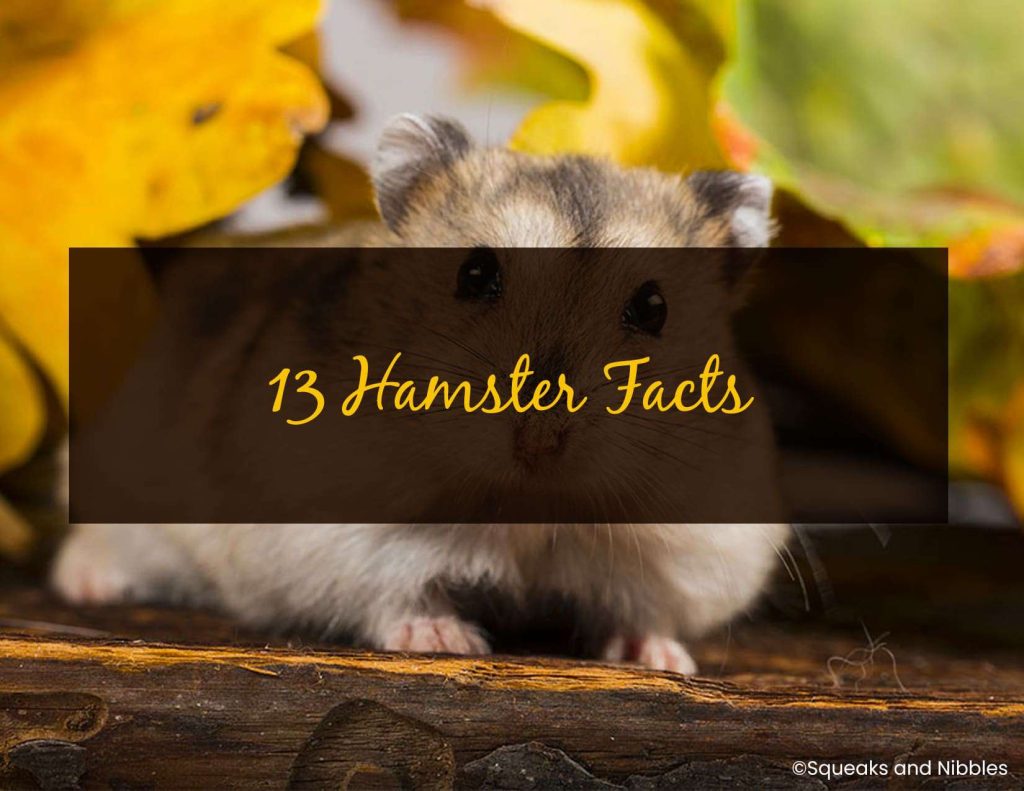The hamster is one of the most popular pets in the world, appearing in thousands of homes across the country. Though they might be loved for their small stature and cute appearance, there is a lot more to the hamster. Let’s look at 13 of the most interesting facts about the hamster.
1. There are Many Varieties
Because of their popularity, there are lots of hamster varieties to choose from. Currently, there are 25 species of hamster in the world. However, there are only five that are kept in captivity. Within each of these, you might find subspecies, which occur as the result of human breeding efforts. These have often been created to highlight specific aspects of the hamster. In this case, they might be bred to look cuter. The most popular variety is known as the Syrian hamsters. These are believed to have been bred from a single pair in the 1930s.
2. In the Wild, Hamsters Live in Burrows Underground
The way that Hamsters act in the wild might not always be true in captivity. However, they still tend to want to burrow. This stems from their natural instincts. In the wild, they have the ability to create intricate burrows underground. They can dig burrows that are half-a-meter deep. Within the main burrow, they have been known to create several offshoots and rooms.
3. Hamsters Have Poor Eyesight
Like many animals that are used to living underground, Hamsters will have poor eyesight. They are shortsighted. Also, they tend to be colorblind. Despite this, they can find their way around. This is because they have a very well-developed sense of smell. They will be able to detect and follow a scent trail. This can be very helpful in the wild, as they use their sense of smell to find food and take it back to their burrow. To establish this path, they have scent glands. These release an odor, which they are able to detect. As they are walking, the hamster will rub these glands on important landmarks, marking the way.

4. Hamsters Have More Than One Partner
During the breeding season, the males of the species will go looking for a female to breed with. In this case, they will often go from burrow to burrow. Once they find a female, they will breed. For the female, they will develop a copulatory plug, which prevents them from breeding with another male. But for the males, they will need to move to another partner. This behavior repeats every breeding season, which is roughly two to four times a year. The average litter size is between five to seven. But females might be able to birth as many as 13 young.
5. Hamsters Are Territorial
In most cases, the hamster will be used to living in their burrow alone. They can become very territorial when forced to defend their area. Because of this, females have been known to kick male partners out of their burrow during the mating season. Because of this, you should opt to only keep one hamster per cage. If you try to keep more than one, it can sometimes lead to illness or the animals becoming stressed. In some cases, there might even be violence between the two hamsters, as they try to see who should control the space. Some species can be kept in pairs. However, you’ll need to make sure that the cage is large enough to accommodate both of them.
6. Hamsters Have Been Banned From Hawaii
While hamsters may be seen as the ideal pet, there is one state where it would be impossible to keep them. Hawaii has banned hamsters. This isn’t because they don’t like cute animals, it’s because of the local ecosystem. The environment in Hawaii closely resembles the optimal environment for hamsters. Because of this, and the high reproductive rate, the government fears that they would be impossible to contain if they got into the wild. This could have profound impacts on the local ecosystem.
7. Hamster Teeth are Always Growing
One of the most interesting aspects of hamster biology is that their teeth contain stem cells. Because of this, they are able to regenerate. This means that they will always be able to keep growing. Scientists are actively studying their teeth, to see if they can replicate these effects in humans. However, for hamsters, the constant growth needs to be controlled. This is why they can always be seen gnawing on things. If you have hamsters as a pet, you’ll need to give them hard objects, like a wooden block, for them to chew on. This will prevent them from getting overgrown. The constant chewing also ensures that their teeth are kept nice and sharp. Interestingly, hamsters are one of the only animals to have a full set of teeth when they are born.
8. Hamsters use their Cheeks to Store Food
Hamsters have several ways that they can use their large cheeks. One of the most common is as a storage device. They’ll be able to shove the food into their cheeks, before making their way back to their burrow. In some cases, a full pouch can make their heads double, or even triple, in size. There they will often hoard the food. This will allow them to make sure that they always have a steady supply. Another interesting feature of their cheeks is that they can fill them with air. This will allow them to float, allowing them to swim.
9. Hamsters are Fast Runners
Hamsters are prey species. Because of this, they need to have some defenses to keep them safe from larger animals. As a result, they evolved to be very fast. How fast they can run can vary slightly between species. In general, though, they will be able to run at between three to six miles per hour. This will be enough to outpace a predator before the hamster can find cover. Interestingly, the way their feet are designed allows them to run just as fast backward. Another defense mechanism is a keen sense of hearing. This is why you might notice the hamster take frequent breaks when they are running. They are listening to the movement of predators, trying to hear if they need to start running.
10. Hamsters Can Carry Diseases
Sadly, hamsters can be prone to picking up diseases and bacterial infections. These can make them sick. However, if they aren’t treated, they have the potential to spread this disease to adults. There are a few ways that they can transmit this disease. First, though aggression towards humans is rare, they might bite you. Also, it’s possible that patting their fur might give you the disease. In some cases, touching something that the hamster had contact with can spread the disease.
11. Hamsters Have Large Livers
Hamsters tend to collect fruits, to last them over the winter. But the time they want to eat them will have fermented. Because of this, they are drinking alcohol. To cope with this, they have evolved to have a larger liver.
12. Hamsters can Hibernate
While hamsters are natural hibernators, if the conditions are right, they might retreat into the burrow. Then, they will seal shut the entrances with dirt. Once inside, they will go into a type of hibernation. The heart rate might slow. They won’t be as active. They will only move every few days, to eat. This behavior occurs in response to extreme weather conditions. Most commonly, this happens when the hamster is too cold.While this might be normal in the wild, it usually doesn’t occur in domestic hamsters, where the temperature swings shouldn’t be too extreme. In some cases, owners have struggled to tell whether their hamster is alive or dead. In this case, you’ll need to look at their stomach, they will be taking uneven breaths. If you try to move or shake them, they will often appear unresponsive. In this case, you’ll need to act quickly. Often, this means taking them to the vet. This will ensure that they don’t have any permeant injuries. On the way to the vet, try to warm them up.
13. Hamsters Have a Long Memory
Hamsters can have a long memory, especially when it comes to their relatives. Even if they are separated for many years, they will be able to recognize family members when they are re-united. You can also form a bond with your hamster. The best way of doing this is by handling them regularly. If you continue to socialize with them, they will be able to recognize you. Typically, though, they will just know one or two people.
Conclusion
Hamsters are some of the most common pets in the world. These are the perfect size for people with smaller houses or apartments. When treated well, they are capable of providing a lot of love and support. Hopefully, these facts have given you a greater insight into your hamster and possibly explained some of their odd behaviors.










